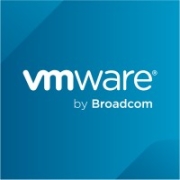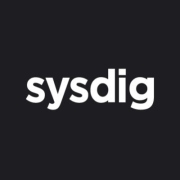Container Monitoring ensures a consistent observing and managing system for containerized applications, affording enterprises enhanced scalability and performance.
Enhancing reliability and security in application environments is critical, and Container Monitoring achieves this by offering comprehensive visibility into containerized workloads. The solution integrates seamlessly with container orchestration platforms like Kubernetes, detecting unusual activities and providing real-time insights, thus enabling effective troubleshooting and optimization.
What are some critical features?In industries like finance and healthcare, Container Monitoring is implemented to ensure compliance with regulations, protect sensitive data, and maintain high service quality. E-commerce platforms utilize it to manage traffic spikes during sales, ensuring uninterrupted customer experiences.
Container Monitoring helps organizations maintain seamless operations within their containerized environments, ensuring reliability and agility in application deployment and management.
| Product | Market Share (%) |
|---|---|
| Dynatrace | 33.1% |
| Datadog | 25.8% |
| Splunk AppDynamics | 16.3% |
| Other | 24.799999999999997% |



















A container management platform’s dashboard shows resource utilization metrics of all applications in the container and on the container’s host machine.
Container metrics allow administrators to evaluate at a high level whether a containerized system is performing as expected and to set up alerts when necessary. There are hundreds of metrics for each container, including memory status, network activity, and CPU. These metrics are used to gauge user experience. For example, knowledge of the percentage of requests that were successfully processed within a specific amount of time gives information on the reliability and speed of a service. metrics such as the number of container and network crashes can be useful for debugging.
Containerized environments are very dynamic and require close monitoring to maintain proper application health. Container observability and monitoring are essential for maintaining a smoothly running container environment and for optimizing container resource usage and costs.
Container monitoring tools allow users to easily build visualizations, allowing visibility into container infrastructure and applications. Container observability integrates tools for monitoring metrics, log query and collection, alerting, and notification.
Because each container image can have many running instances, and due to the rapid pace at which new images and versions are introduced, issues can easily spread through containers, their applications, and the entire container architecture. This makes it crucial to isolate the root cause of a problem as soon as it appears.
In large-scale containerized environments, container observability must be automated and is only possible using container monitoring tools.
Containers need management in order to enable the applications hosted on them to work more efficiently. In addition, containers need a management system when the number of containers on the system becomes too large for a single IT team to operate. With efficient container management, IT admins can easily keep their environments secure, enabling developers to enjoy the flexibility and ease of containers and allowing them to easily develop and deploy new apps and services.
A container management system automates the process of creating, deploying, and scaling of containers. Using a container management system simplifies the addition, removal, and management of containers on a large scale.
Container monitoring systems collect metrics to ensure that all the applications running on containers are performing as they should. Metrics are tracked and analyzed in real time to determine whether applications are fulfilling their expected requirements.
Effective Container Monitoring requires tools that provide visibility, scalability, and real-time analytics. Solutions like Prometheus, Grafana, and Datadog are widely used. These tools help you track container performance metrics, troubleshoot issues quickly, and ensure that your applications run smoothly. They're essential because they integrate seamlessly with orchestration platforms like Kubernetes, enabling automated monitoring and alerting capabilities for your container environments.
How can you ensure security in Container Monitoring?Security in Container Monitoring involves proactive measures such as setting up role-based access controls and continuous vulnerability scanning. Tools like Aqua Security and Sysdig are designed for container environments, providing insights into container behaviors and anomalies. Implementing runtime protection to detect threats in real-time is crucial. For robust security, integrate security practices into your CI/CD pipelines to catch vulnerabilities early and maintain compliance across all deployments.
Why is real-time alerting crucial in Container Monitoring?Real-time alerting helps you respond immediately to issues that could impact application performance or cause downtime. With the dynamic nature of containers, problems can escalate quickly. Real-time alerts enable you to intervene and resolve issues faster, minimizing potential disruptions. They also allow you to automate responses to specific alerts, reducing the manual workload and ensuring consistent, timely actions in maintaining system health.
What are the benefits of using AIOps in Container Monitoring?AIOps, or Artificial Intelligence for IT Operations, enhances Container Monitoring by using machine learning to predict issues before they occur. By analyzing large volumes of data, AIOps tools detect patterns and anomalies that might be missed by traditional monitoring. This predictive capability reduces downtime and improves resource utilization. It allows you to automate certain operations, leading to more efficient resource management and operational agility.
How can Container Monitoring improve resource management?Container Monitoring provides insights into resource consumption patterns, helping you optimize the allocation of CPU, memory, and storage. By identifying underutilized or overutilized resources, you can make informed decisions regarding scaling and capacity planning. This optimization leads to cost savings and improved efficiency. Tools like Kubernetes metrics server and custom dashboards allow you to visualize resource usage, making it easier to balance loads across your infrastructure.